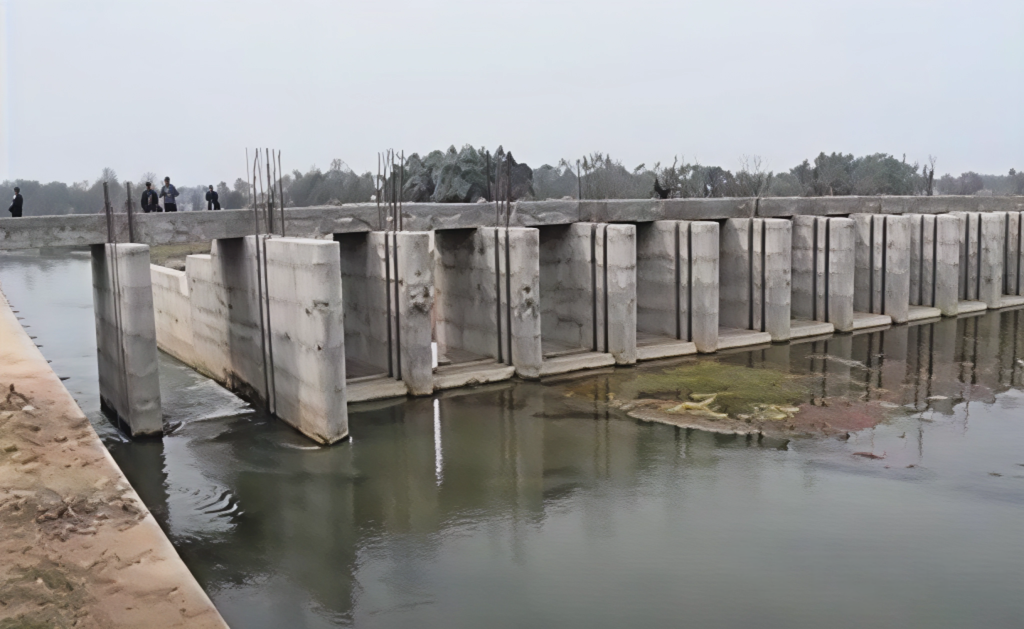
The long-stalled Jamuni Irrigation Project, which had been on hold for five years, is now regaining momentum. Delays caused by compensation disputes and the absence of electric gates at the barrage had threatened to leave the project incomplete. Recently, however, the tender for the barrage’s electric gates has been issued.
Engineer and Information Officer of the Narayani Irrigation Management Office, Suresh Prasad Sah, confirmed that the Irrigation Department awarded the gate tender to a company, which has already started designing the gates. Only NPR 60 million in compensation remains to be paid to landowners along the barrage area.
“After the monsoon, gate construction and the remaining compensation distribution will begin,” Sah said. “The contractor has already completed the designs for staff housing and electric gates in the barrage area.”
Out of approximately 17.10.10 bigha of land affected by the barrage embankment, only six bigha remains for compensation. The main structure of the irrigation project has been built along the boundary of Adarsha Kotwal Rural Municipality in Bara and Pachrauta Municipality with funding from the Government of Nepal and a World Bank loan. So far, NPR 350 million has been spent on the project.
Started six years ago, the Jamuni Irrigation Project aimed to provide year-round irrigation for farmers in eastern Bara and western Rautahat. While the barrage was completed about five years ago, the installation of electric gates has yet to begin. Embankment construction, costing NPR 120 million, started three years ago but is only 80% complete.
The project faced further delays when landowners in the submerged areas obtained a stay order from the High Court, Birgunj, last May, demanding compensation before construction could proceed. The embankment, which protects northbound areas and affects over 100 local farmers’ 17 bigha of land, remained incomplete.
Once operational, water from Block 11 to 15 of the Gandak Canal will be available year-round, benefiting farmers in eastern Bara and western Rautahat. The Jamuni Irrigation Project was constructed as an alternative to the Gandak Canal, which, since 1971, has not supplied water reliably to the last four blocks.
The Narayani Irrigation Management Office, Birgunj, is overseeing the construction of the barrage and associated structures. Construction of the barrage and other structures began in FY 2072/73, with the barrage completed in FY 2076/77. The Kumar/Ashish/Amar JV, with a contract of NPR 310 million, completed the barrage at NPR 224.51 million, including a 30% cost overrun and VAT.
The embankment construction by DS Construction Services spans 1,101 meters and is underway with a total cost of NPR 120 million. The Jamuni barrage has 13 gates in total, including four at the lower section of the river, and two head regulator gates.
Once the canal becomes operational, 7,500 liters of water per second will be available. Normally, the Jamuni River flows at 25,000 liters per second, with flood levels exceeding 400,000 liters per second. During such floods, gates must be opened to prevent damage. Traditionally, opening each gate requires three to four people, but with electric gates, the process will be automated, reducing both human and material risk. Delays in gate operation during floods could cause the river to alter its course, rendering the barrage ineffective and causing significant damage to nearby villages.
The plan diverts water from the Jamuni River about 500 meters south into the Gandak Canal, providing irrigation to 1,200 hectares in Bara and 8,300 hectares in Rautahat, benefiting a total of 9,500 hectares of farmland.











